Get started with Pinterest for illustrators
Leading illustrators share their essential tips for using Pinterest to gain clients and build a following.
Visually attractive, quick and easy to set up, and more than a little addictive, it’s not hard to see the appeal of Pinterest. With over 100 million monthly users, Pinterest has cemented itself as the tool of choice for hobbyists and professionals alike to collect and share inspirational images – everything from interiors to recipes, cute pictures of cats and seasonal mood boards.
For designers and freelance illustrators alike, the platform has quickly become the weapon of choice for a fresh, engaging approach to self-promotion that can see one image shared and collected on hundreds of pin boards globally in a matter of minutes.
Pin what makes you smile and stirs your imagination
Will Scobie
Building huge archives of reference material has long been practiced by illustrators, but whereas physical folders take tireless effort to build and keep up to date (not to mention taking up space on the bookshelf), the advent of the digital pinboard has provided creatives an efficient way to not only store stacks of images in one place, but also give individuals access to hundreds of boards collected by other users, thereby introducing an extra layer of fun and engagement to the experience. Pinners can follow each other’s boards, repin each other’s images and share boards directly and create ‘private’ boards to share with close friends or clients one-to-one – thus the possibilities for collaboration are almost endless.
Here, we speak to prolific Pinners and illustrators Will Scobie, Emily Forgot, Emmeline Pidgen and Caroline Tomlinson to glean their insight and expert advice on creating Pin boards that engage, excite and inspire.
A digital scrap book

Jelly London illustrator Caroline Tomlinson has secured several large commissions through sharing her work on Pinterest, with her sketches in particular generating print sales. Pidgen sees Pinterest as a platform that compliments her activity on other social media sites such as Twitter and Instagram, which combine together to build a strong flow of traffic and engagement through which work enquiries are generated. Having used the platform for around five years, Tomlinson pins daily, using the platform as a ‘scrap book’.
“I think most creatives are like magpies,” says Tomlinson. “We love to gather and collect visual things.” For Tomlinson, the fact that she can take her digital pinboard with her everywhere is also part of the draw, enabling her to quickly store her ideas on the move.“Pinterest gives me a much more rounded sense of what I am about.”
Delve a little deeper
Understanding the tricks to Pinterest is key to making the most of the platform to kickstart your creative process and build an audience to engage with potential clients, as award winning illustrator Emmeline Pidgeon reveals. Discovering that the platform can be key to showcase projects that reflect her unique approach to illustration and her passion for taking on illustrative challenges, her Pinterest board ‘What Emmeline Wore in July’ – during which she illustrated her daily outfit for the entire month of July, took a narrative approach that helped to differentiate her character and artistic voice from other illustrators.
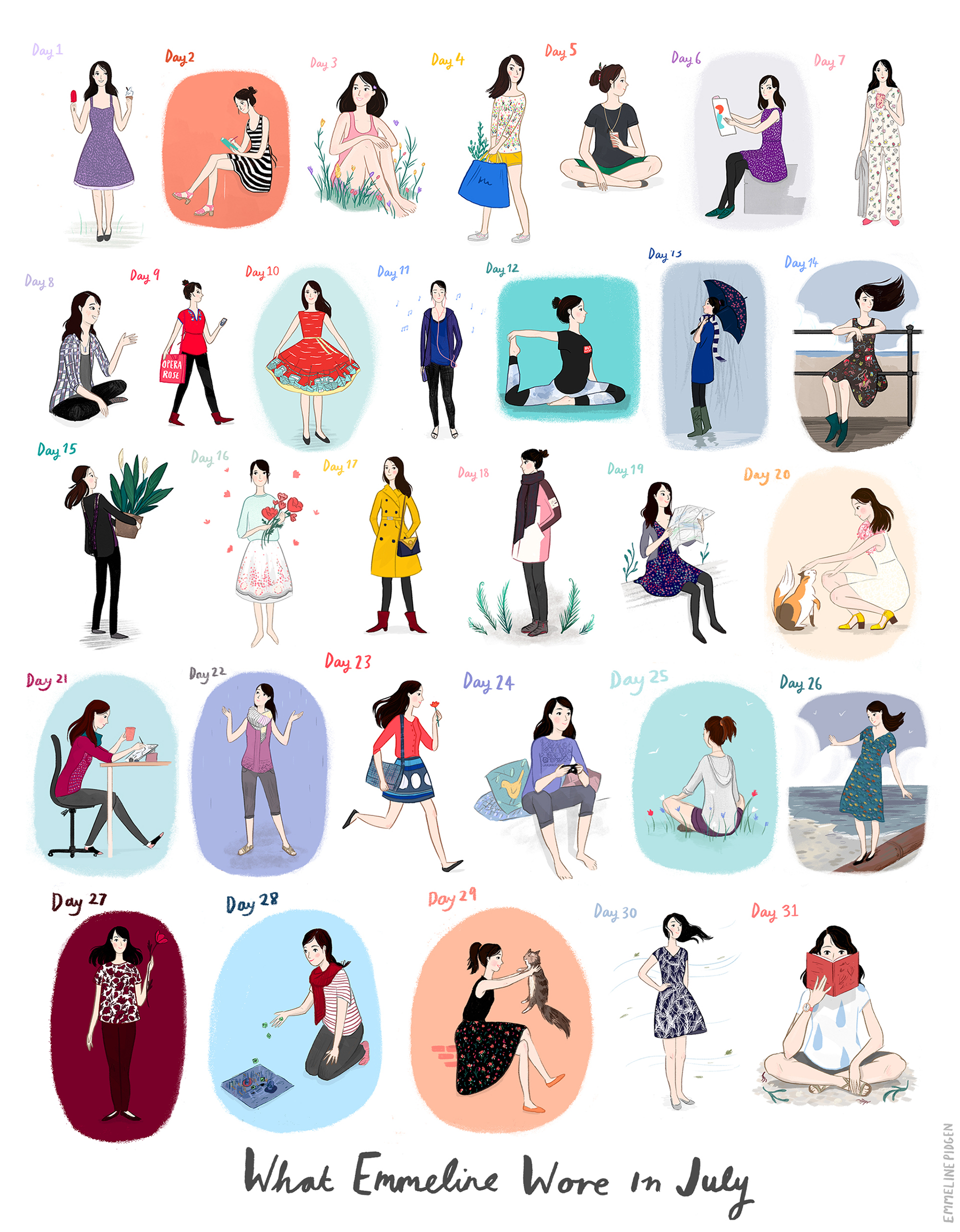
“I like to offer something relatable within my work,’ says Pidgeon. A genuine, creative project that people can really engage with.” As well as learning more about her creative process, the project also caught the attention of brands like Laura Ashley, Boden and Cath Kidson. “It had a huge impact exposure-wise. We ended with over 75,000 views of the project on my blog in that month alone!”
Specialising in in picture books, editorial illustration and comics, Pidgeon’s feed is punctuated with behind the scenes sketches that reveal her creative process. “I’m definitely looking more into setting up boards featuring links to my live drawing videos, or previews of creative industry articles I’ve featured in. I find Pinterest brilliant for giving a window into my personality”
A sense of personality
Beyond sales and self-promotion, Pinterest’s ability to function as both a practical personal and private online space is what sets it apart from other social media platforms; it can separate out and reveal multiple interests though themed boards, and subsequently convey a sense of personality whilst showcasing aesthetic sensibilities that are liberated from the confines of any one creative discipline.
For Brighton-based illustrator Will Scobie, Pinterest has been an essential part of his toolkit for the last few years. Sharing a personally curated selection of images across 70 boards, his most popular collections include nature, architecture, photography and skateboarding. A place to nurture his passions, and collect valuable references, Pinterest acts as a springboard for his creative process.
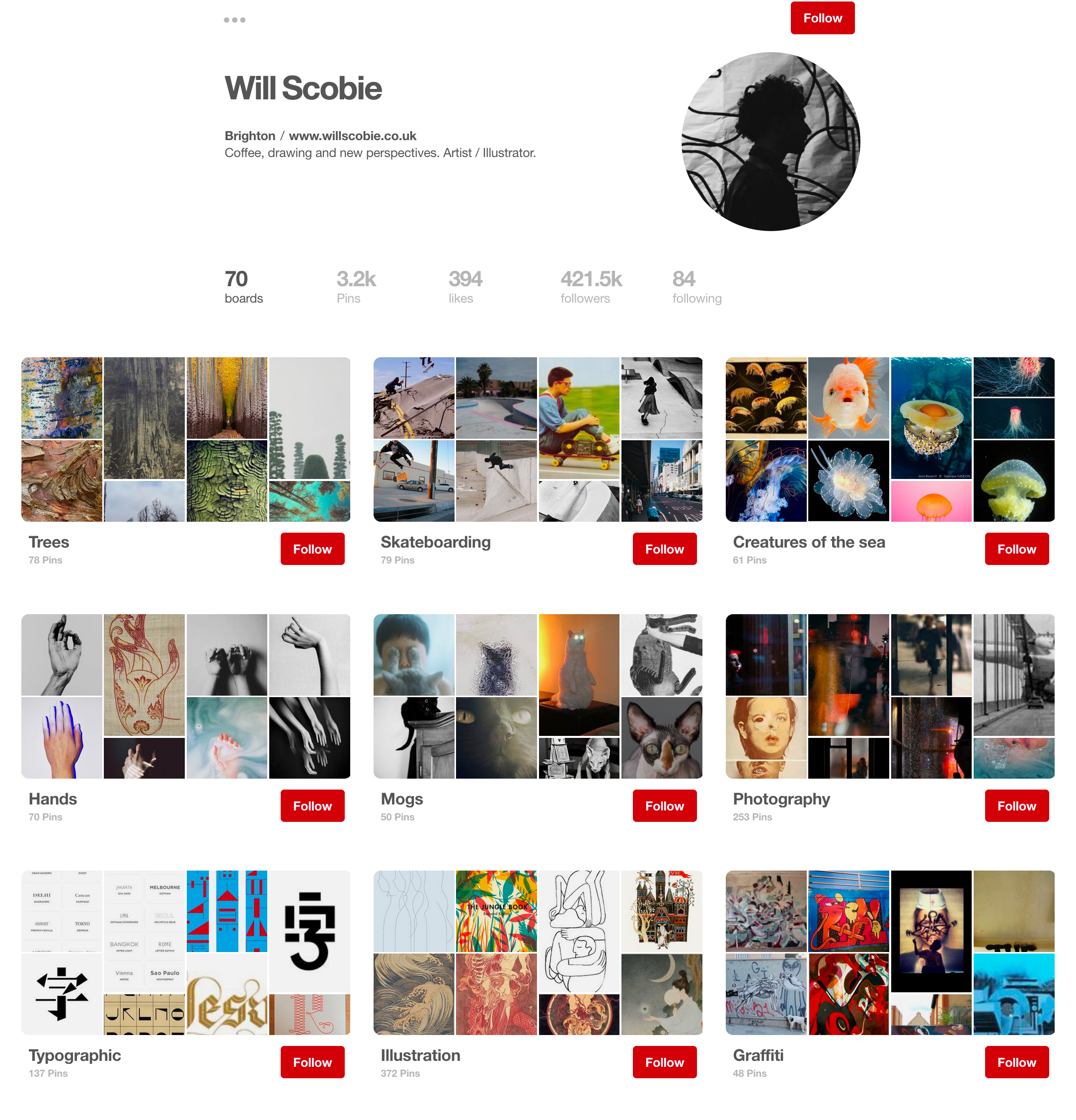
Working as a professional illustrator for the last 12+ years, his portfolio ranges from editorial, branding, murals and sculpture, to recent projects in VR. “I really like how visual the whole system is’ says Will. “Algorithmic suggestions to related images are particularly interesting, offering a glimpse into how our visual culture is evolving.” With the largest following of any illustrator we could find, Scobie credits his audience growth to sharing his passions, rather than focusing solely on his portfolio – and pinning from a variety of sources outside the design industry has been key to building his impressive fan base of 421k followers.
London-based illustrator and graphic artist Emily Forgot agrees. Describing herself as a ‘purveyor of creative wonder on the web, ’ her Pinterest boards reflect her lifelong obsession with interior design and architecture. “Its important to have passions outside of your creative field, that interest you,” says Emily, having built a strong following of 8k through sharing a growing collection of stylish objects, interior accessories and vintage finds.
Addicted to pins
Illustrator Emmeline Pidgen has also found the act of pinning to be a fruitful and energizing practice – particularly through sharing her interest in fashion. Pinboards such as ‘Look Back’ and ‘The Wardrobe and the Jewellery Box’ serve as place to collate accessories and vintage photographs, which in turn influence her illustration. Having used the platform for a number of years, she was first drawn to it to collate reference images for a commission. “I needed to collect a lot of references, and it was absolutely perfect for that, but (as you can probably tell now) I got lured in to creating boards for everything else I discovered along the way!" Pidgeon says.
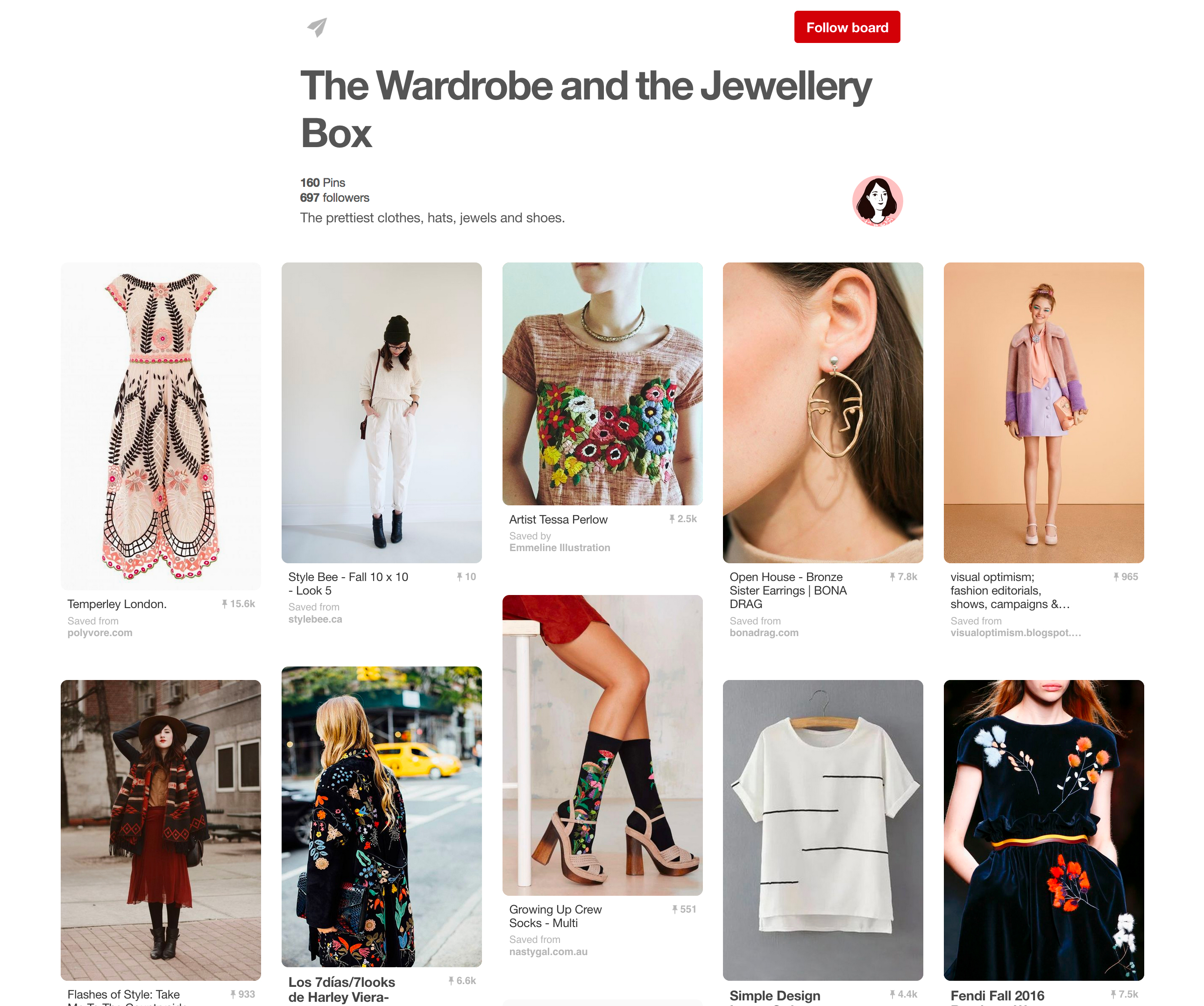
Indeed, sharing the work of others is perhaps one of the most popular features of Pinterest, and unlike Twitter or Instagram where images often get buried in a feed in a matter of minutes, the ‘repin’ tool on Pinterest assures longevity that other social media platforms don’t offer. Categorisation also helps Pinterest stand apart, giving every user unlimited opportunity to share a huge variation of styles of work by other designers and creatives without the worry that they will confuse potential clients or followers. “I think there’s something about categorisation that appeals. Specific, curated collections are easy for people to digest in a sea of visual information,” adds Pidgeon.
Credit where it's due
However, with the option of editing image captions, the flipside is that it can be very easy for illustrators to go uncredited, and it is essential the emphasise the importance of crediting artists and photographers, as illustrator Emmeline Pidegon warns, “If you’re sharing your artwork, make sure you credit yourself in the description or link, and likewise before pinning anyone else’s artwork, always credit them!”
Whilst it can be tempting to cultivate pinboards with your target audience in mind, focusing too much on building a following may have the opposite effect.“Pin things you genuinely love,” recommends Pidgeon.”Let the audience find you, it will grow naturally in time.” The illustrator also recommends hunting for the visual things that “bring you joy” as a valuable exercise in understanding what makes you tick. “Indulging in your passion leads to a strong understanding of your personal and visual aesthetic.”
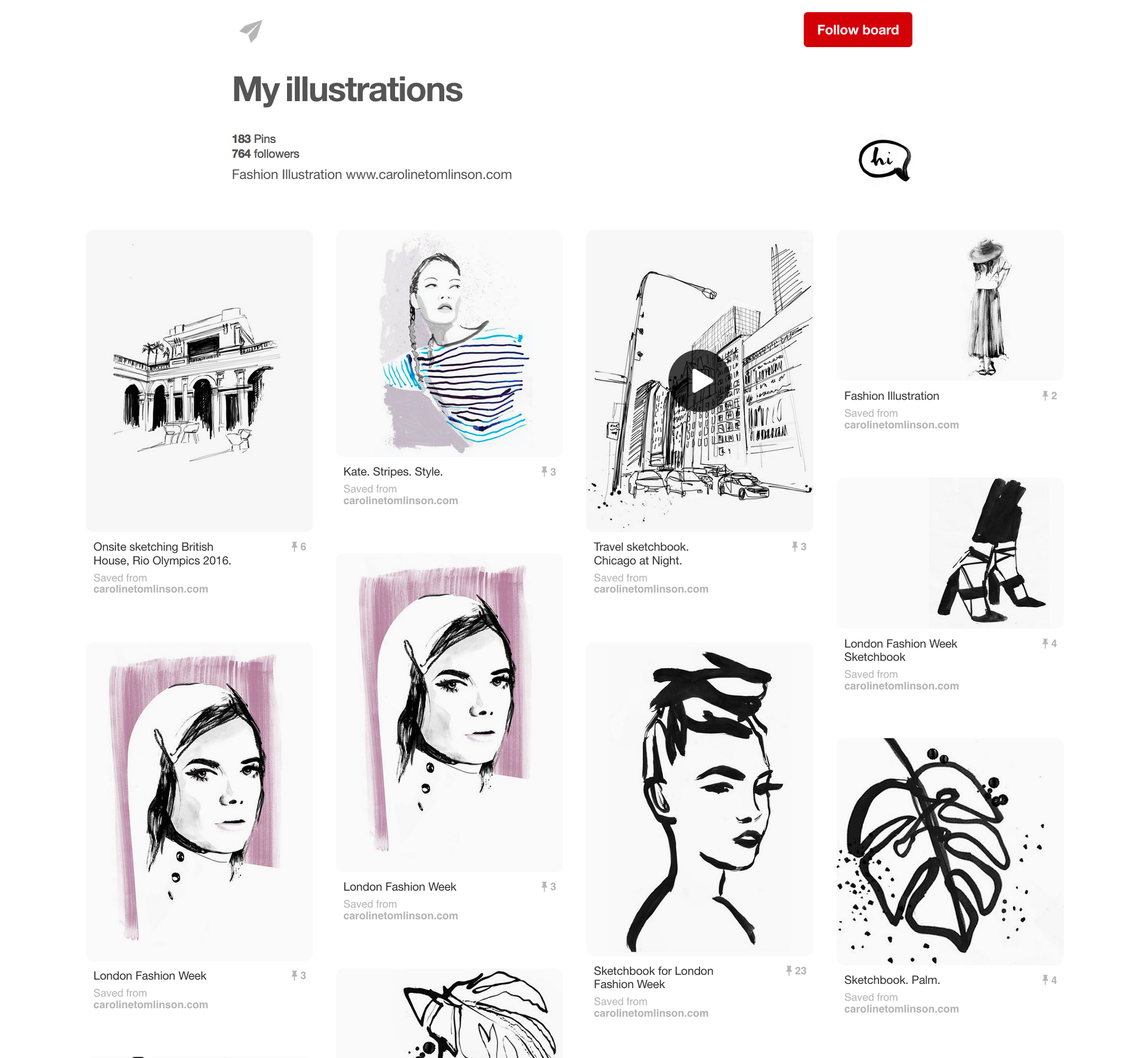
The one thing all our illustrators agree on is the value in staying true to your own tastes and interests, as expressed by Pidegon. “The best advice I can give, which applies to all social media, is to just try to be yourself – without a strong agenda or hard-sell.”
“Be true to what keeps you inspired, entertained and excited,” concludes Caroline Tomlinson. “This is what makes you unique and that’s what people want to see.” Illustrator Will Scobie sums it up simply: “Pin what makes you smile and stirs your imagination.”
Related articles:

Thank you for reading 5 articles this month* Join now for unlimited access
Enjoy your first month for just £1 / $1 / €1
*Read 5 free articles per month without a subscription

Join now for unlimited access
Try first month for just £1 / $1 / €1
Get the Creative Bloq Newsletter
Daily design news, reviews, how-tos and more, as picked by the editors.
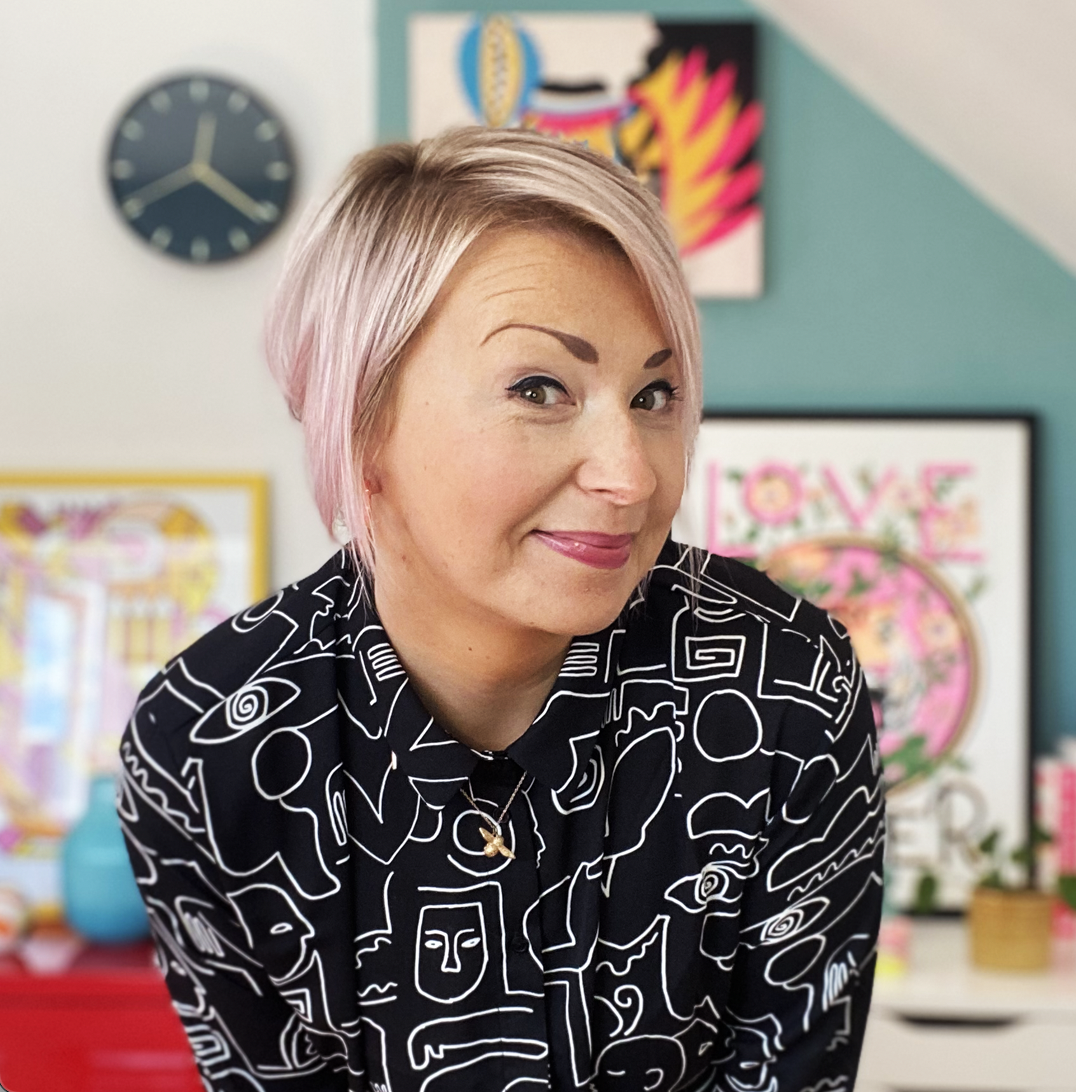
Lisa Hassell is a creative coach and the founder of Inkygoodness – a global community on a mission to connect, inspire, and empower the next generation of artists, illustrators and creative entrepreneurs.
